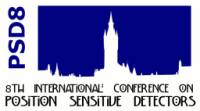Speaker
Dr
Andrew Boston
Description
High-resolution gamma-ray detectors based on high-purity germanium crystals (HPGe) are one of the key workhorses of experimental nuclear science. The technical development of such detector technology has been dramatic in recent years. Large volume, high-granularity, electrically segmented HPGe detectors have been realised and a methodology to improve position sensitivity using pulse-shape analysis coupled with the novel technique of gamma-ray tracking has been developed.
Each major technical advance in gamma-ray detection devices has resulted in significant new insights into the structure of atomic nuclei. The next major step in gamma-ray spectroscopy involves achieving the goal of a 4pi ball of Germanium detectors by using the technique of gamma-ray energy tracking in electrically segmented Germanium crystals. The resulting spectrometer will have an unparalleled level of detection power for nuclear electromagnetic radiation [1]. Collaborations have been established in Europe (AGATA) [2] and the USA (GRETA/GRETINA) to build gamma-ray tracking spectrometers [3].
This presentation will discuss the status of the AGATA (Advanced GAmma Tracking Array) spectrometer and will provide an insight into how the device will be exploited at European facilities such as INFN Legnaro, GANIL and the future FAIR facility in Darmstadt, Germany.
[1] J. Simpson, J. Phys. G 31 (2005) S1801-S1806.
[2] J. Simpson, Acta Phys. Pol. B36 1383 (2005)
[3] M.A. Delaplanque, NIM A 430 (1999) 292

